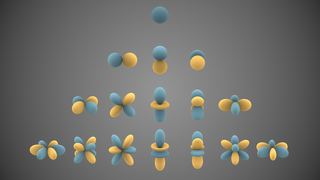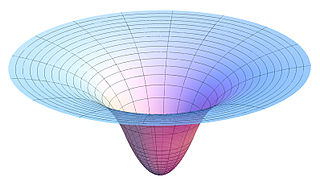Related Research Articles
Harmonic analysis is a branch of mathematics concerned with the representation of functions or signals as the superposition of basic waves, and the study of and generalization of the notions of Fourier series and Fourier transforms. In the past two centuries, it has become a vast subject with applications in areas as diverse as number theory, representation theory, signal processing, quantum mechanics, tidal analysis and neuroscience.

Tides are the rise and fall of sea levels caused by the combined effects of the gravitational forces exerted by the Moon and the Sun, and the rotation of the Earth.

In mathematics and physics, Laplace's equation is a second-order partial differential equation named after Pierre-Simon Laplace, who first studied its properties. This is often written as

Adrien-Marie Legendre was a French mathematician who made numerous contributions to mathematics. Well-known and important concepts such as the Legendre polynomials and Legendre transformation are named after him.

In mathematics, mathematical physics and the theory of stochastic processes, a harmonic function is a twice continuously differentiable function f : U → R, where U is an open subset of Rn, that satisfies Laplace's equation, that is,

In mathematics and physical science, spherical harmonics are special functions defined on the surface of a sphere. They are often employed in solving partial differential equations in many scientific fields.

Pierre-Simon, marquis de Laplace was a French scholar and polymath whose work was important to the development of engineering, mathematics, statistics, physics, astronomy, and philosophy. He summarized and extended the work of his predecessors in his five-volume Mécanique céleste (1799–1825). This work translated the geometric study of classical mechanics to one based on calculus, opening up a broader range of problems. In statistics, the Bayesian interpretation of probability was developed mainly by Laplace.

In classical mechanics, the gravitational potential at a location is equal to the work per unit mass that would be needed to move an object to that location from a fixed reference location. It is analogous to the electric potential with mass playing the role of charge. The reference location, where the potential is zero, is by convention infinitely far away from any mass, resulting in a negative potential at any finite distance.
The Bôcher Memorial Prize was founded by the American Mathematical Society in 1923 in memory of Maxime Bôcher with an initial endowment of $1,450. It is awarded every three years for a notable research memoir in analysis that has appeared during the past six years. The work must be published in a recognized, peer-reviewed venue. The current award is $5,000.
In mathematics and mathematical physics, potential theory is the study of harmonic functions.
Atmospheric tides are global-scale periodic oscillations of the atmosphere. In many ways they are analogous to ocean tides. Atmospheric tides can be excited by:

The theory of tides is the application of continuum mechanics to interpret and predict the tidal deformations of planetary and satellite bodies and their atmospheres and oceans under the gravitational loading of another astronomical body or bodies.
In functional analysis, compactly supported wavelets derived from Legendre polynomials are termed Legendre wavelets or spherical harmonic wavelets. Legendre functions have widespread applications in which spherical coordinate system is appropriate. As with many wavelets there is no nice analytical formula for describing these harmonic spherical wavelets. The low-pass filter associated to Legendre multiresolution analysis is a finite impulse response (FIR) filter.
Spheroidal wave functions are solutions of the Helmholtz equation that are found by writing the equation in spheroidal coordinates and applying the technique of separation of variables, just like the use of spherical coordinates lead to spherical harmonics. They are called oblate spheroidal wave functions if oblate spheroidal coordinates are used and prolate spheroidal wave functions if prolate spheroidal coordinates are used. If instead of the Helmholtz equation, the Laplace equation is solved in spheroidal coordinates using the method of separation of variables, the spheroidal wave functions reduce to the spheroidal harmonics. With oblate spheroidal coordinates, the solutions are called oblate harmonics and with prolate spheroidal coordinates, prolate harmonics. Both type of spheroidal harmonics are expressible in terms of Legendre functions.
Clifford analysis, using Clifford algebras named after William Kingdon Clifford, is the study of Dirac operators, and Dirac type operators in analysis and geometry, together with their applications. Examples of Dirac type operators include, but are not limited to, the Hodge–Dirac operator, on a Riemannian manifold, the Dirac operator in euclidean space and its inverse on and their conformal equivalents on the sphere, the Laplacian in euclidean n-space and the Atiyah–Singer–Dirac operator on a spin manifold, Rarita–Schwinger/Stein–Weiss type operators, conformal Laplacians, spinorial Laplacians and Dirac operators on SpinC manifolds, systems of Dirac operators, the Paneitz operator, Dirac operators on hyperbolic space, the hyperbolic Laplacian and Weinstein equations.
David William Boyd is a Canadian mathematician who does research on harmonic and classical analysis, inequalities related to geometry, number theory, and polynomial factorization, sphere packing, number theory involving Diophantine approximation and Mahler's measure, and computer computations.
George Ridsdale Goldsbrough FRS was an English mathematician and mathematical physicist.
References
- ↑ Cartwright, David Edgar (2000). Tides: A Scientific History . Cambridge University Press. pp. 85–87.
- ↑ Hough, S. S. (1897). On the Application of Harmonic Analysis to the Dynamical Theory of the Tides. Part I. On Laplace's' Oscillations of the First Species, and on the Dynamics of Ocean Currents. Proceedings of the Royal Society of London, vol. 61, 201–257.
- ↑ Hough, S. S. (1898). On the application of harmonic analysis to the dynamical theory of the tides. Part II. On the general integration of Laplace's dynamical equations. Philosophical Transactions of the Royal Society of London. Series A, Containing Papers of a Mathematical or Physical Character, vol. 191, 139–185.